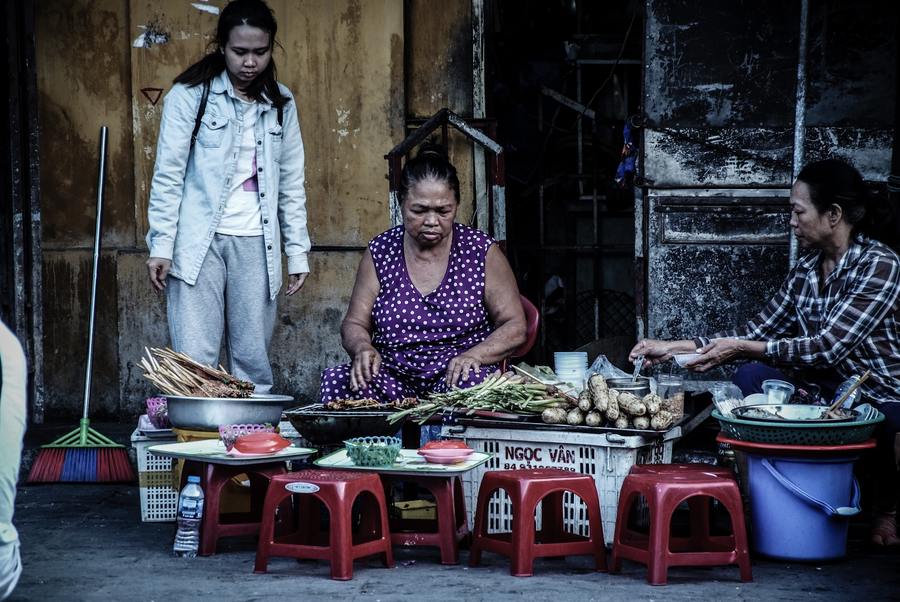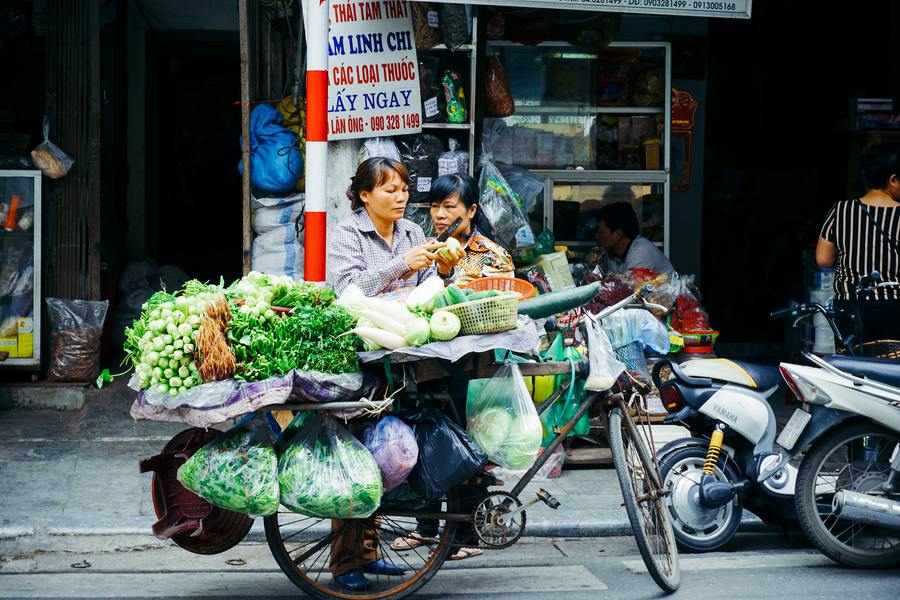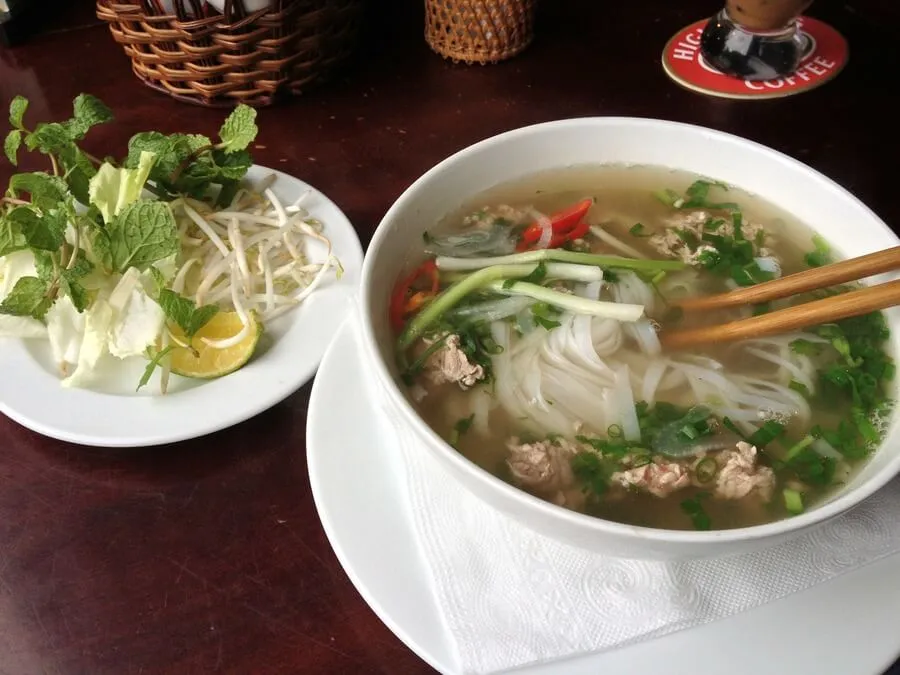A history of… Pho
Spicy Adventures
Your cart is empty.
SUBTOTAL
£0.00

Spicy Adventures
Vietnam’s national dish, pho is a traditional noodle soup. Go anywhere in just about any city, town or village in Vietnam first thing in the morning and you are guaranteed to find the locals sat on tiny plastic stools slurping this delicious goodness at the side of the road.
Forming the base of the dish is a rich broth made from either beef or chicken. The broth is then poured over rice noodles, sliced meat and a generous helping of fresh herbs like Thai basil and Vietnamese mint leaves. Toppings are then added (according to the diner’s own taste) such as fresh lime, fresh chili, bean sprouts and chili and hoisin sauces.
The spices used in pho are generally in their whole and dried form. Although recipes vary between families and vendors, these are the main spices used to create the rich broth.
It’s widely thought that the origins of pho can be traced back to Nam Dinh in northern Vietnam. Its story began in the late 19th century, when French colonisation began. Before the French arrived, Vietnamese people were using cows solely for manual labour in the fields, not for eating. However, when the French arrived, they brought with them their pot au feu, or beef stew. Their demand for beef made the meat more available throughout Vietnam, and locals started to change their diet as a consequence. Perhaps the cow was more than just a beast for labour?
Like any good cooking, the leftover bones didn’t go to waste – the Vietnamese locals got innovative and used them to make beef broth. It’s thought that the word ‘pho’ is an adaptation of the word ‘feu’ from pot au feu.

At the time, street vendors were selling xao trau (rice vermicelli noodle soup with water buffalo). This dish was first made popular by Chinese workers from Yunnan and Guangdong, who had travelled to Vietnam in search of work. But with the availability of beef by the 1920s, these vendors enhanced the xao trau by using the rich broth and replacing water buffalo with beef. In the 1930s, the roaming street vendors who carried pho around on either end of a bamboo pole became a familiar sight in the streets of Nam Dinh and Hanoi. With more and more street vendors and eateries serving pho, more varieties of the dish started popping up. Some cooks added prawns and chicken instead of beef, and although this caused an outrage at first, people soon embraced the idea. The beauty of pho is that wherever you go, it is slightly different. Each bowl is unique and individual.
It is around this time in the 1930’s that the word ‘pho’ was officially added to the Vietnamese dictionary and from then on, the popularity of pho skyrocketed. It had worked its way into the culture and become a staple food.

But as well as bringing a delicious meal, the 20th century also brought turmoil for Vietnam. An economic downturn meant that food was rationed. Rice wasn’t to be wasted on making noodles, so the stalls that remained started making potato starch noodles instead. However, the vendors found a way around the rationing – they would display the potato starch noodles but serve fresh pho in secret. You had to know exactly where to get it and how to order it (by saying very loudly “I would like a bowl of soup with potato flour noodles”) in case any State officials were lurking nearby. People would have to eat the pho really quickly, as the sanctions for selling pho included the vendor’s equipment being seized and a hefty fine to pay.
When the French finally left in 1954, the country was divided into North and South Vietnam. As people fled the Communist regime in the North for a better life in the South, they brought pho with them. Naturally, cooks in the South put their own spin on the dish by adding ingredients that were more widely grown in the richer soils of South Vietnam. You will notice how Pho from the North tends to have less ingredients, with less meat and simple garnishes of fresh chili, lemon and a few herbs. Pho from the South has a lot more ingredients, with bean sprouts, fresh basil and plenty of herbs.

But despite the subtle differences in flavour, pho hasn’t changed that much since its early days. Over the years, a larger choice of beef cuts has been introduced. You can now choose from rare beef, flank, brisket, tripe, tendon and meatballs. It’s also becoming more common to see Vietnamese chefs experimenting with new flavours and creations, like brown rice noodles instead of rice vermicelli, as well as pho noodle rolls. Anan Saigon, a restaurant in Ho Chi Minh, found themselves in the spotlight when they created a $100 pho made with truffle oil, wagyu and foie gras.
In the late 20th century, Saigon was overthrown by the North at the time of the Vietnam War. Vietnamese refugees fled Vietnam in hopes of starting a better life. As they made their new home in countries like the United States, France and Australia, they introduced their beloved dish to international audiences. The popularity of the dish soon saw it make its name worldwide.
Most of the pho vendors and restaurants in Vietnam have been serving customers for many decades, their woks feeding generation after generation. The choice of places to eat pho can be overwhelming. In Hanoi, it is worth a visit to Pho Gia Truyen, Pho Thin and Pho Suong. Head south to Ho Chi Minh and you’ll come across vendors like Pho Hoa, Pho Dau and Pho 2000, which was made famous when President Bill Clinton stopped for a meal there.

If you can’t make it to Vietnam just yet, don’t worry – there are plenty of places to find Vietnamese food in the UK. Pho is a national chain of restaurants and you can find them in pretty much any city in the UK. Or simply find your local Vietnamese restaurant – they’re bound to serve this much loved dish.
Perhaps, using our spices and herbs, you may even have a crack at making the dish yourself?
Understanding Spices
Spices have long been integral to the UK's culinary landscape, adding depth, flavours, and richness to a myriad of dishes. From the pungent aroma of cumin in Indian curries to...
Read MoreUnderstanding Spices
Confetti is an essential part of any wedding day. Not only is it a wonderful way to greet a newlywed couple, but it also provides some beautiful photo opportunities. The...
Read MoreSeasonal Ideas
It’s no secret that any handmade gift will always be more special than a store-bought one. Homemade food gifts are especially wonderful, a labour of love that shows someone you...
Read MoreHealth and Wellbeing
It’s no secret that winter’s cold and gloomy weather makes us crave indulgent dishes like fondue and baked goods like sticky toffee pudding and apple crumble. While Christmas is the...
Read More